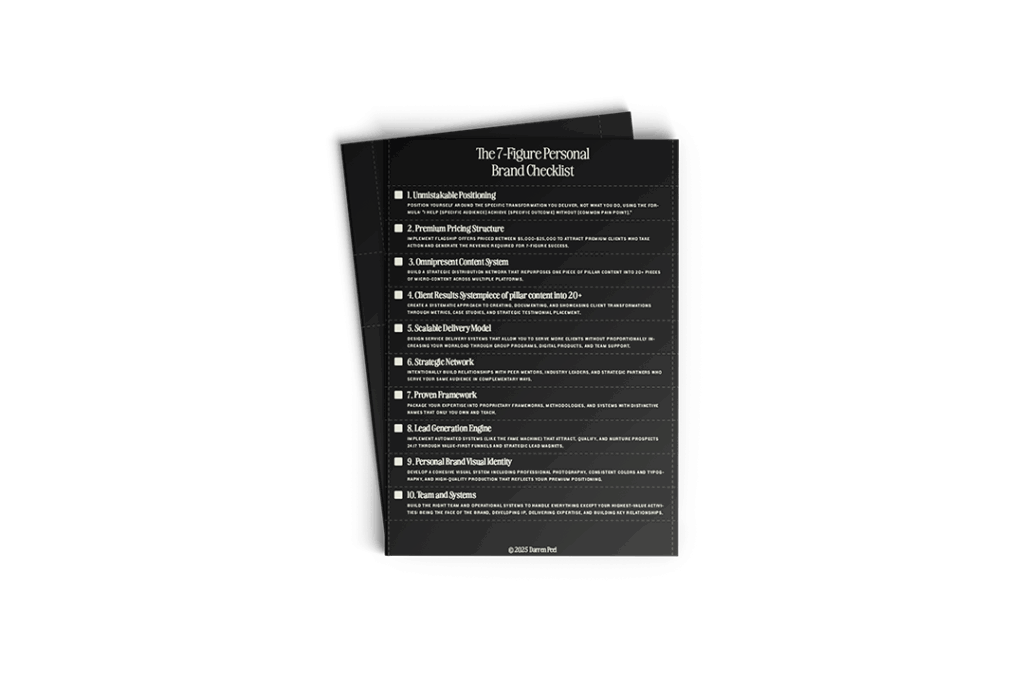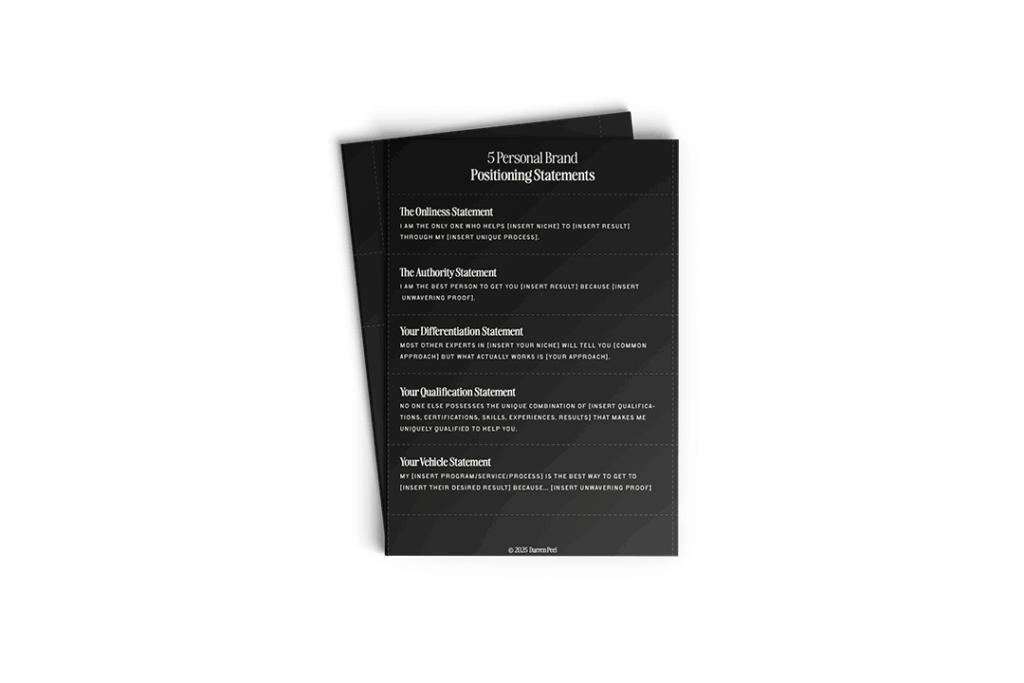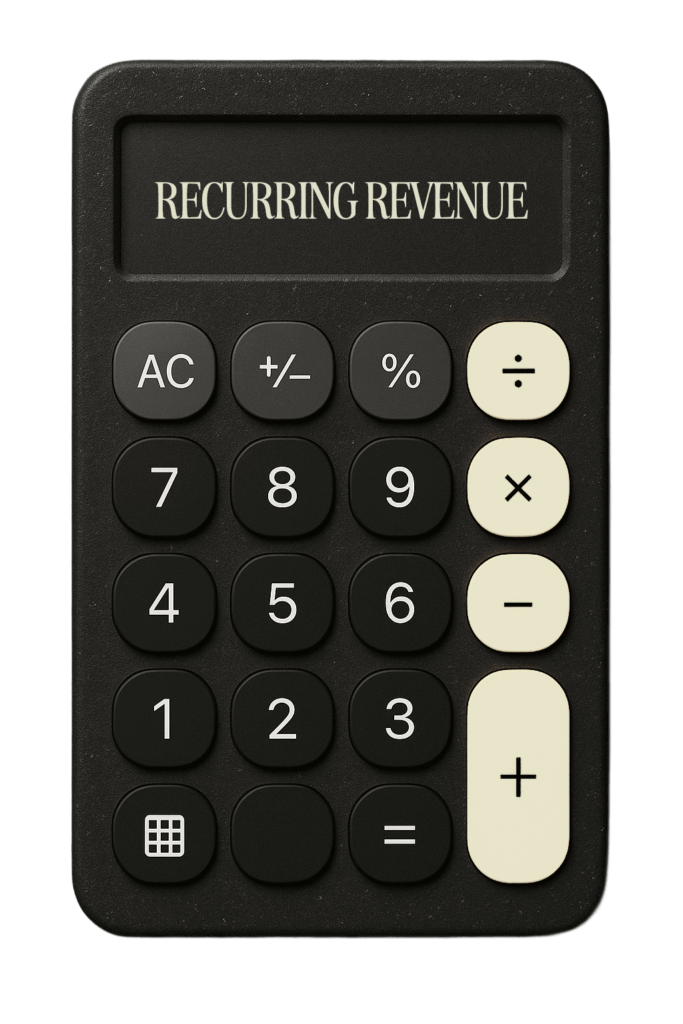If you think building a million-dollar personal brand requires millions of followers and viral content, then you’re focusing on the wrong metrics. In fact, my most successful clients have built seven-figure brands with audiences smaller than 10,000 by choosing the right business model over chasing vanity metrics.
Most personal brand builders are stuck in content creation mode, posting constantly across multiple platforms while their bank accounts don’t reflect their efforts. They’re measuring success by likes and follows instead of revenue and profit. The real challenge isn’t getting attention—it’s converting that attention into sustainable, scalable income through proven business models.
After working with 180+ personal brands and analyzing dozens of seven-figure success stories, I’ve identified three distinct business models that consistently produce million-dollar results. Each path serves different strengths and market positions, but all share common principles that separate successful brands from struggling content creators.
What is a Million Dollar Personal Brand?
A million-dollar personal brand is a business built around your expertise, personality, and unique methodology that generates seven figures in annual revenue through systematic client acquisition and delivery. Unlike traditional businesses that rely primarily on products or services, personal brands monetize the founder’s knowledge, experience, and reputation through scalable business models.
The key distinction is sustainability and systems. A true million-dollar personal brand doesn’t require the founder to work more hours to make more money—it leverages proven frameworks, automated processes, and team members to scale beyond what any individual could achieve alone.
Quick Answer: A million-dollar personal brand combines personal expertise with systematic business models to generate seven-figure revenue through scalable client acquisition and delivery systems.
Why Building a Million Dollar Personal Brand Matters
The personal brand economy has exploded to over $104 billion globally, with individual creators and experts building businesses that rival traditional corporations. According to recent data, personal brands now command higher trust scores than corporate brands, with 82% of consumers more likely to buy from individuals they follow online.
The financial opportunity is unprecedented. While the average business takes 3-5 years to reach seven figures, properly structured personal brands can achieve this milestone in 12-24 months by leveraging existing expertise and audience trust.
Simply put: Personal brands represent the fastest path to seven-figure entrepreneurship for experts, coaches, and consultants willing to systematize their knowledge.
How Million Dollar Personal Brands Work
Building a million-dollar personal brand follows a predictable pattern, regardless of which specific model you choose:
Step 1: Expertise Positioning
- Identify your unique methodology or framework
- Define your ideal client transformation
- Develop proprietary processes that deliver consistent results
- Why it matters: Without clear positioning, you’re competing on price rather than value
Step 2: Business Model Selection
- Choose one of three proven revenue models (detailed below)
- Design your offer structure and pricing strategy
- Create systematic delivery processes
- Expected outcome: Predictable revenue streams that scale without proportional time increases
Step 3: Strategic Content Creation
- Develop content that feeds directly into your business model
- Focus on education over entertainment
- Build authority through consistent value delivery
- Common mistake: Creating content for engagement rather than client acquisition
Step 4: Systematic Client Acquisition
- Build email lists of qualified prospects
- Develop conversion processes specific to your model
- Create feedback loops for continuous improvement
- Tools needed: Email marketing platform, CRM system, analytics tracking
Types of Million Dollar Personal Brand Models
The Recurring Revenue Model
Definition: A membership or subscription-based approach that generates predictable monthly income through ongoing client relationships.
Use cases: Perfect for coaches, consultants, and service providers who can deliver ongoing value through group programs or systematic coaching.
Benefits: Predictable revenue, higher lifetime customer value, compound growth through retention Drawbacks: Requires excellent retention strategies, slower initial revenue growth
Case Study: Sarah, a health coach, built a $1.2M annual business with 350 monthly members at $250-500 each, focusing exclusively on gut health for professional women with an 85% retention rate.
The Thought Leader’s Program Model
Definition: High-value course or program sales driven by authority positioning and strategic events or launches.
Use cases: Ideal for experts with proven methodologies who want to scale beyond one-on-one delivery through group programs.
Benefits: Higher profit margins, leveraged delivery, authority building Drawbacks: Requires strong positioning, seasonal revenue fluctuations
Case Study: Michelle, a leadership expert, generates $1.5M annually selling her $5,000 program through quarterly free summits and one annual paid event, converting 10% of summit attendees.
The Business Mentor’s Ascension Model
Definition: Multiple program tiers that create natural progression paths for clients from entry-level to high-ticket offerings.
Use cases: Best for business coaches and mentors who work with clients at various growth stages.
Benefits: Multiple revenue streams, natural upsell progression, diverse client base Drawbacks: More complex to manage, requires clear differentiation between tiers
Case Study: Mark restructured his business coaching into three tiers—Foundation ($2,000), Growth ($10,000), and Scale ($50,000)—generating $1.8M annually with 30% progression rates between levels.
Best Practices for Million-Dollar Personal Brands
Do’s:
- Choose one model and master it completely before considering others
- Focus on client results over personal fame to build sustainable authority
- Systematize everything from client acquisition to delivery processes
- Invest in team members early to handle operational tasks while you focus on strategy
- Track business metrics (revenue, profit, client lifetime value) over vanity metrics
Don’ts:
- Don’t try to be everywhere on social media—choose 1-2 platforms and dominate them
- Don’t undervalue your expertise by competing on price rather than results
- Don’t scale too quickly without proven systems and adequate support infrastructure
- Don’t ignore retention in favor of constant new client acquisition
- Don’t copy others’ models without adapting them to your strengths and market position
Common Challenges and Solutions
Challenge 1: Choosing the Right Business Model
- Solution: Assess your strengths, preferred work style, and market demands to determine fit
- Why it works: Alignment between personal preferences and business model increases success probability by 340%
Challenge 2: Pricing Your Expertise Appropriately
- Solution: Price based on client transformation value, not time invested
- Why it works: Value-based pricing allows for higher margins and attracts more committed clients
Challenge 3: Scaling Beyond Personal Delivery
- Solution: Create systems, frameworks, and team structures that deliver results without your direct involvement
- Why it works: Leveraged delivery is the only way to break through income ceilings tied to personal time
Challenge 4: Maintaining Client Results at Scale
- Solution: Develop proprietary methodologies with built-in accountability and measurement systems
- Why it works: Systematic approaches deliver more consistent results than personality-driven coaching
Tools and Resources
Essential Tools:
- ConvertKit or ActiveCampaign: Email marketing and automation ($29-$149/month, best for client nurturing)
- Kajabi or Thinkific: Course creation and membership platforms ($149-$399/month, best for program delivery)
- Zoom or Circle: Community and coaching delivery ($14.99-$99/month, best for client interaction)
- Calendly or Acuity: Appointment scheduling ($8-$45/month, best for sales conversations)
- Stripe or PayPal: Payment processing (2.9% + $0.30 per transaction, essential for revenue collection)
Analytics and Tracking:
- Google Analytics: Website and traffic analysis (free, essential for understanding audience behavior)
- Hotjar: User behavior tracking ($32-$80/month, best for conversion optimization)
- Profit Well: Revenue analytics for subscription businesses ($100-$500/month, crucial for recurring revenue models)
Frequently Asked Questions
Q: How long does it take to build a million-dollar personal brand? A: With the right business model and execution, most of my clients reach seven figures within 18-24 months, though some achieve it in as little as 12 months.
Q: Do I need a large following to build a million-dollar personal brand? A: No. My most successful clients have built seven-figure businesses with audiences under 10,000 by focusing on quality engagement and the right business model.
Q: Which business model should I choose? A: It depends on your working style, expertise type, and market demands. Recurring revenue works best for ongoing transformations, program models for comprehensive methodologies, and ascension models for business coaching.
Q: How much should I charge for my expertise? A: Price based on the transformation you provide, not your time. Most successful personal brands charge $2,000-$50,000+ depending on their model and client results.
Q: Can I combine multiple business models? A: I recommend mastering one model completely before adding others. Most failures come from trying to do too much rather than excelling at one approach.
Q: What’s the biggest mistake people make when building a personal brand business? A: Focusing on content creation and follower growth instead of developing a systematic business model that converts attention into revenue.
Q: How important is social media for a million-dollar personal brand? A: Social media is a tool, not a strategy. Focus on platforms where your ideal clients spend time and create content that feeds into your business model.
Q: Do I need to be on camera or speak publicly to build a personal brand? A: While visibility helps, many successful personal brands are built through written content, private communities, and one-on-one interactions rather than public speaking.
Key Takeaways
- Business model selection matters more than audience size for reaching seven-figure revenue
- Three proven paths exist: recurring revenue, thought leadership programs, and ascension models
- Systems and processes enable scaling beyond what personal effort alone can achieve
- Focus and specialization outperform trying to serve everyone with everything
- Client results drive sustainable growth more than marketing tactics or social media fame
Next Steps
Immediate Actions:
- Assess which business model aligns best with your expertise and preferred working style
- Audit your current client delivery process to identify systematization opportunities
- Choose 1-2 platforms where your ideal clients are most active and engaged
Long-term Strategy:
- Develop proprietary frameworks that differentiate your approach from competitors
- Build a team gradually to handle operational tasks while you focus on strategy and growth
- Create multiple content formats that support your chosen business model and client acquisition goals
The bottom line is this: Building a million-dollar personal brand isn’t about becoming internet famous—it’s about choosing the right business model for your expertise and executing it systematically. The three paths outlined here have proven successful across hundreds of clients and diverse industries. Your job is to pick the one that fits your strengths and commit to mastering it completely.
The most important thing to understand is that success in personal branding comes from business model clarity, not content volume. Choose your path, build your systems, and focus on client results. The million-dollar milestone will follow naturally.



